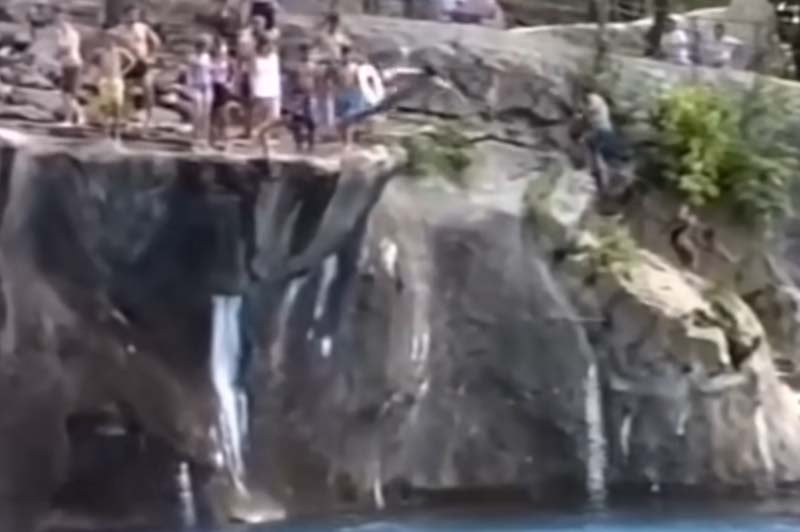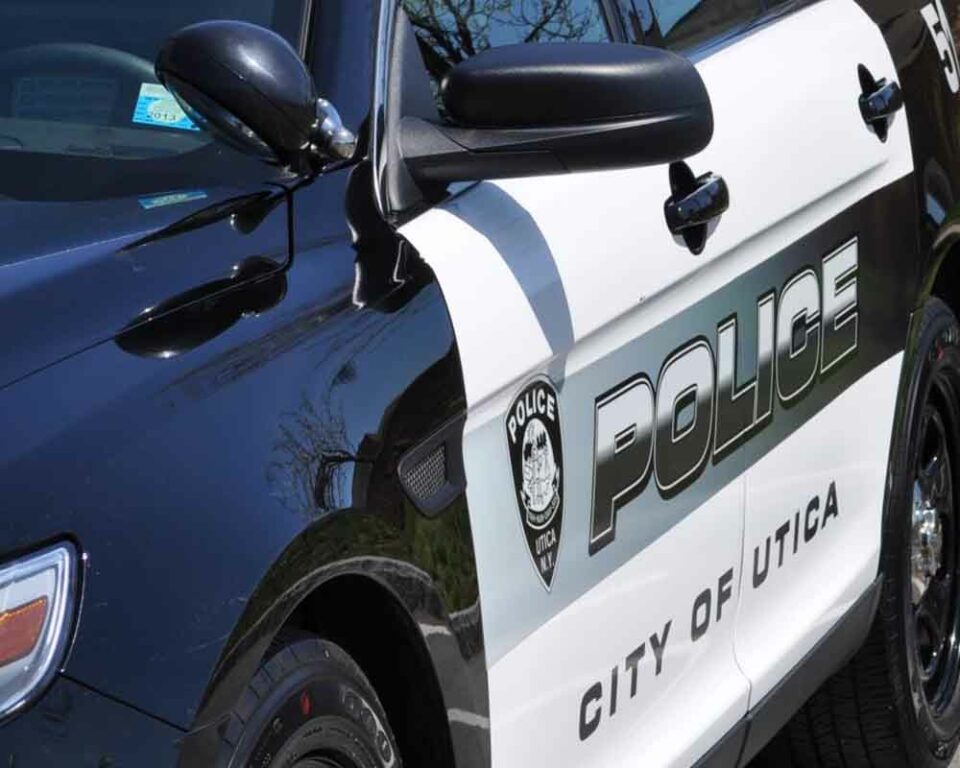Remember the days when summer meant testing the limits of fun and danger? If you grew up in the tri-state area in the ’80s or ’90s, you’re probably familiar with Action Park in Vernon, New Jersey. Known locally as “Traction Park” or “Class Action Park,” this infamous amusement park has earned a reputation as one of the most dangerous places to get an adrenaline rush – often with a side effect of scrapes, bruises, or worse.
Action Park was no ordinary theme park. Opened in 1978 by ambitious and somewhat reckless entrepreneur Gene Mulvihill, the park was based on the concept that visitors should be in control of their own thrill rides. In practice, however, this often meant that the safety of those thrill rides was questionable at best. The park was divided into three main areas: Waterworld, Motorworld and the Alpine Center, each with its own infamous attractions.
The Alpine Slide was one of the most notorious attractions. Imagine a concrete track winding down a mountain, and you, on a small cart, must negotiate sharp turns using a simple handbrake. Sounds like fun, right? If those brakes failed – or if you simply didn’t master the art of braking – accidents were inevitable. Unfortunately, this slide was also the scene of the park’s first fatal accident in 1980, when an employee came off the track and hit his head on a rock.
Then there was the Tidal Wave Pool, also ominously known as the “Grave Pool.” This wave pool was the first of its kind in the United States and could hold up to 1,000 people at a time. The fresh water made it difficult to stay afloat, and with waves up to three feet high, lifeguards reportedly performed up to 30 rescues a day. Unfortunately, this attraction claimed three lives during its years of operation.
If the idea of racing down a mountain or braving monstrous waves didn’t already blow your mind, Motorworld had another highlight: the Super Speedboats. These were placed in a murky swamp filled with water snakes, where guests could race at up to 40 miles per hour. Of course, these boats were treated more like bumper cars, which led to some horrific accidents.
Accidents waiting to happen
What made Action Park both exciting and terrifying was the underlying chaos. Safety protocols were minimal and the park was largely run by teenagers who were often unsupervised and sometimes even drunk while on duty. Injuries were common; in 1985 alone, there were 110 injuries at the park, including 45 head injuries and 10 broken bones. Ambulances made so many trips to the park that Action Park eventually donated additional ambulances to the local community to keep up with demand.
But it wasn’t just the injury rate that made Action Park notorious – it was the attitude towards it. The park and its founder responded to the criticism with defiance, claiming the injuries were the result of user error rather than design flaws. This, coupled with the park’s lack of adequate insurance for years, created an environment where visitors truly risked life and limb for a thrill.
The legacy of Action Park
By the mid-90s, mounting lawsuits and rising insurance costs eventually forced Action Park to close in 1996. The site was later converted to Mountain Creek Waterpark, with a renewed emphasis on safety – though the memories (and scars) of Action Park live on in infamy. Gene Mulvihill’s son Andy has even written a book about the park’s wild history, offering insight into what made this place so notorious.
Action Park is a prime example of a bygone era when thrill seekers accepted danger as part of the package. Today it is a legend, a place where kids became legends simply by surviving a day of “fun.”
Sources: Wikipedia, Weird NJ, NJ Monthly, Star Ledger
Decades later, the park finally reopened with safer rides.
- Memories of Action Park, where children sought thrills and broken bones in the 1980s

Remember the days when summer meant testing the limits of fun and danger? If you grew up in the tri-state area in the ’80s or ’90s, you’re probably familiar with Action Park in Vernon, New Jersey. Known locally as “Traction Park” or “Class Action Park,” this infamous amusement park has earned a reputation as one of the most dangerous places to get an adrenaline rush – often with a side effect of scrapes, bruises, or worse.
Action Park was no ordinary theme park. Opened in 1978 by ambitious and somewhat reckless entrepreneur Gene Mulvihill, the park was based on the concept that visitors should be in control of their own thrill rides. In practice, however, this often meant that the safety of those thrill rides was questionable at best. The park was divided into three main areas: Waterworld, Motorworld and the Alpine Center, each with its own infamous attractions.
The Alpine Slide was one of the most notorious attractions. Imagine a concrete track winding down a mountain, and you, on a small cart, must negotiate sharp turns using a simple handbrake. Sounds like fun, right? If those brakes failed – or if you simply didn’t master the art of braking – accidents were inevitable. Unfortunately, this slide was also the scene of the park’s first fatal accident in 1980, when an employee came off the track and hit his head on a rock.
Then there was the Tidal Wave Pool, also ominously known as the “Grave Pool.” This wave pool was the first of its kind in the United States and could hold up to 1,000 people at a time. The fresh water made it difficult to stay afloat, and with waves up to three feet high, lifeguards reportedly performed up to 30 rescues a day. Unfortunately, this attraction claimed three lives during its years of operation.
If the idea of racing down a mountain or braving monstrous waves didn’t already blow your mind, Motorworld had another highlight: the Super Speedboats. These were placed in a murky swamp filled with water snakes, where guests could race at up to 40 miles per hour. Of course, these boats were treated more like bumper cars, which led to some horrific accidents.
Accidents waiting to happen
What made Action Park both exciting and terrifying was the underlying chaos. Safety protocols were minimal and the park was largely run by teenagers who were often unsupervised and sometimes even drunk while on duty. Injuries were common; in 1985 alone, there were 110 injuries at the park, including 45 head injuries and 10 broken bones. Ambulances made so many trips to the park that Action Park eventually donated additional ambulances to the local community to keep up with demand.
But it wasn’t just the injury rate that made Action Park notorious – it was the attitude towards it. The park and its founder responded to the criticism with defiance, claiming the injuries were the result of user error rather than design flaws. This, coupled with the park’s lack of adequate insurance for years, created an environment where visitors truly risked life and limb for a thrill.
The legacy of Action Park
By the mid-90s, mounting lawsuits and rising insurance costs eventually forced Action Park to close in 1996. The site was later converted to Mountain Creek Waterpark, with a renewed emphasis on safety – though the memories (and scars) of Action Park live on in infamy. Gene Mulvihill’s son Andy has even written a book about the park’s wild history, offering insight into what made this place so notorious.
Action Park is a prime example of a bygone era when thrill seekers accepted danger as part of the package. Today it is a legend, a place where kids became legends simply by surviving a day of “fun.”
Sources: Wikipedia, Weird NJ, NJ Monthly, Star Ledger
Decades later, the park finally reopened with safer rides.
- Man shot on porch in Utica, police seek information

UTICA, New York: — A man was shot early Saturday morning as he sat on his porch in the 900 block of Stark Street, authorities said. The incident occurred at about 4:14 a.m. when an unknown person fired several shots, striking the victim in the abdomen.
Utica Police and Fire Department emergency personnel arrived at the scene shortly after the shooting was reported. The victim was immediately transported to Wynn Hospital, where he is being treated for non-life-threatening injuries.
The Utica Police Department’s Major Crimes Unit has taken over the investigation. Authorities are asking the public for help in obtaining information related to the shooting.
“We urge anyone with knowledge of this incident to come forward,” Utica police said in a statement.
- Tinton Avenue reopened after morning closure due to accident

TINTON FALLS, NJ — Tinton Avenue, which was closed this morning following a car crash, has reopened to traffic, according to Tinton Falls police. The road was closed between the Tinton Falls Fire Station and Wayside Road while emergency crews responded to the crash.
The closure affected residents in the Spring Meadow and Branford Circle areas, who were granted access to their homes from the fire station side. Most residents on Tinton Avenue in the affected area were also able to enter their homes during the closure.
Tinton Avenue has been reopened since 9:30 a.m. Police advise drivers to drive with caution as repairs in the area are expected to last several hours.
